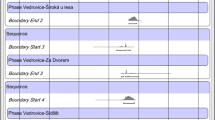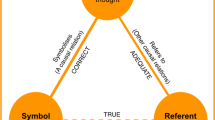Abstract
Around the margins of Asmara, Eritrea, hundreds of sites dating to the early and mid-first millennium BC have been documented. They range from single family dwellings to small and large hamlets, small and large villages, and small towns. We call these Ancient Ona sites, using the Tigrinya term for ruin. Our findings testify to significant subsistence, ritual, and economic variation within a region of 12 by 17 km: (1) different subsistence strategies in the well-watered, open basin to the west of Asmara (emmer wheat, barley; cattle) compared to the uplands north and east of Asmara (lentil, teff; goats/sheep); (2) ritual events, marked by stone bulls' heads and a huge ash deposit at Sembel Kushet, that brought people together in rites of passage and intensification during Meskel-like ceremonies, including ritual exchange; and (3) the exploitation of gold north of Asmara among heterarchically organized communities that exchanged specialized products within this region.
Résumé
Aux environs d’Asmara, en Erythrée, des centaines de sites datant du début et milieu du premier millénaire avant notre ère ont été recensés. Ils comprennent des habitations unifamiliales, des hameaux de taille diverse, des villages petits et grands, ainsi que des petites villes. Nous appelons ces vestiges ‘sites Ona anciens,’ en nous inspirant du terme Tigrinya désignant une ruine. Nos trouvailles démontrent une diversité considérable en matière d’économie, de moyens subsistance, et pratiques rituelles dans une région de 12 par 17 kilomètres: 1) Les stratégies de subsistance employées dans le bassin ouvert et bien arrosé a l’ouest d’Asmara (amidonnier, avoine, bovins) diffèrent de celles en usage dans les hautes terres au nord et à l’est d’Asmara (lentille, teff, chèvres/moutons); 2) Les évènements rituels sont représentés par des tètes de taureaux en pierre et par un dépôt énorme de cendres à Sembel Kushet; ils rassemblaient les gens dans des rites de passage et rites d’intensification similaires à ceux des cérémonies de Meskel; 3) Au nord d’Asmara, l'or était exploité par des communautés ‘hétérarchiques’ impliquées dans des échanges de produits spécialisés dans la région.










Similar content being viewed by others
Notes
In chapter 10 (D'Andrea et al. 2008) of The Archaeology of Ancient Eritrea (Schmidt et al. 2008a), we use Ancient Ona to replace references to the ‘Pre-Aksumite’ of northern Ethiopia—an extrapolation that is not germane because of differences discussed here. The use of Ancient Ona (800–350 BC) is restricted to the greater Asmara area.
As D. Phillipson (2009) notes, radiocarbon dating between the eighth and fifth centuries BC is problematic because of variations in atmospheric C14 during that time. However, we have reliable AMS dating for the beginning and multiple dates towards the end of this problematic period, allowing us to reckon relative time through fine grained analysis of stratigraphic evidence (e.g., Mehari 2008).
Trace-element analysis on these objects is needed, once archaeology in Eritrea re-opens to free inquiry.
References
Anfray, F. (1968). Aspects de l’archéologie ethiopienne. Journal of African History, 9, 345–366.
Anfray, F. (1990). Les anciens éthiopiens. Paris: Colin.
Bard, K. A., Fattovich, R., Manzo, A., & Perlingieri, C. (1997). Archaeological investigations at Bieta Giyorgis, Aksum, Ethiopia. Journal of Field Archaeology, 24, 387–404.
Barnard, C. G. (1941). Report on the Mines and the Mining Industry of Eritrea, June 1941. British Military Report of 21 pages on deposit at the Ministry of Energy and Mines, Asmara, Eritrea.
Blackburn, G. (2003). Independent Geologist’s Technical Report: Asmara Project, Hamasian Goldfield, Eritrea. September Eritrea. Online at http://64.233.187.104/search?=cache:75F8hKGwZ6EJ:www.infomine.com/index/pa145277, accessed September 15, 2007.
Boardman, S. (1999). The agricultural foundation of the Aksumite Empire, Ethiopia: an interim report. In M. van der Veen (Ed.), The exploitation of plant resources in ancient Africa (pp. 137–148). New York: Kluwer.
Boardman, S. (2000). Contributions on archaeobotany. In D. W. Phillipson (Ed.), Archaeology at Aksum, Ethiopia, 1973–1997 (pp. 268–270). London: British Institute in Eastern Africa and Society of Antiquaries. 363-8, 412-14.
Boardman, S., & Phillipson, D. W. (2000). Archaeobotany. In D. W. Phillipson (Ed.), Archaeology at Aksum, Ethiopia, 1973–1997 (pp. 468–470). London: British Institute in Eastern Africa and Society of Antiquaries.
Buffa, V., & Vogt, B. (2001). Sabir – cultural identity between Saba and Africa. In R. Eichmann & H. Parzinger (Eds.), Migration und Kulturtransfer (pp. 437–450). Bonn: Habelt.
Crumley, C. L. (1995). Heterarchy and the analysis of complex societies. In R. M. Ehrenreich, C. L. Crumley & J. E. Levy (Eds.), Heterarchy and the analysis of complex societies (pp. 1–5). Arlington: American Anthropological Association. Archaeological Papers, no. 6.
Curtis, M. C. (2005). Archaeological Investigations in the Greater Asmara Area: a regional approach in the central highlands of Eritrea. Unpublished PhD dissertation, University of Florida.
Curtis, M. C. (2009). Relating the Ancient Ona culture to the wider northern Horn: discerning patterns and problems in the archaeology of the first millennium BC. African Archaeological Review, 26, 327–350. doi:10.1007/s10437-009-9062-4.
Curtis, M. C., & Schmidt, P. R. (2008). Landscape, people, and places on the ancient Asmara plateau. In P. R. Schmidt, M. C. Curtis & Z. Teka (Eds.), The archaeology of ancient Eritrea (pp. 64–108). Trenton: Red Sea.
D’Andrea, A. C., & Haile, M. (2002). Traditional emmer processing in highland Ethiopia. Journal of Ethnobiology, 22, 179–217.
D’Andrea, C. A., Schmidt, P. R., & Curtis, M. C. (2008). Paleoethnobotanical analysis and agricultural economy at early first millennium BCE sites around Asmara. In P. R. Schmidt, M. C. Curtis & Z. Teka (Eds.), The archaeology of ancient Eritrea (pp. 207–216). Trenton: Red Sea.
de Contenson, H. (1981). Pre-Aksumite culture. In G. Mokhtar (Ed.), UNESCO General History of Africa, vol. 2 (pp. 341–361). London: Heinemann.
Drewes, A. J. (1962). Inscriptions de l’Éthiopie antique. Leiden: Brill.
Fattovich, R. (1997a). The contacts between Southern Arabia and the Horn of Africa in late prehistoric and early historical times: a view from Africa. In A. Avanzini (Ed.), Profumi d'Arabia (pp. 273–286). Rome: ‘L’Erma’ di Bretschneider.
Fattovich, R. (1997b). The near East and Eastern Africa: their interaction. In J. O. Vogel (Ed.), Encyclopedia of Precolonial Africa: archaeology, history, languages, cultures and environments (pp. 479–484). Walnut Creek: AltaMira.
Fattovich, R. (2000). Aksum and the Habashat: state and ethnicity in ancient northern Ethiopia and Eritrea. Working Papers in African Studies 228. Boston, MA: Boston University African Studies Center.
Fattovich, R. (2004). The ‘pre-Aksumite’ state in northern Ethiopia and Eritrea reconsidered. In P. Lunde & A. Porter (Eds.), Trade and travel in the Red Sea region (pp. 71–77). Oxford: Archaeopress.
Fattovich, R. (2008). Book review: the archaeology of ancient Eritrea. International Journal of African Historical Studies, 41, 346–348.
Fattovich, R. (2009). Reconsidering Yeha, c. 800–400 BC. African Archaeological Review, 26, 275–290.
Habtemichael, D. (2000). Reconstructing pre-independence Eritrean archaeology: a case study and analysis of ‘bull heads’ (Senior research paper in Archaeology). Department of Archaeology, University of Asmara.
Marshall, F., & Hildebrand, E. (2002). Cattle before crops: the beginnings of food production in Africa. Journal of World Prehistory, 16, 99–143.
McIntosh, R. J. (1998). The peoples of the middle Niger. Oxford: Blackwell.
Mehari, A. (2008). Ceramic analysis of Sembel site: cultural stratigraphy. In P. R. Schmidt, M. C. Curtis & Z. Teka (Eds.), The archaeology of ancient Eritrea (pp. 163–177). Trenton: Red Sea.
Phillipson, D. W. (2000). Archaeology at Aksum, Ethiopia, 1993–97. London: British Institute in Eastern Africa and Society of Antiquaries.
Phillipson, D. W. (2009). The first millennium BC in the highlands of northern Ethiopia and south-central Eritrea: a re-assessment of cultural and political development. African Archaeological Review, 26, 257–274. doi:10.1007/s10437-009-9064-2.
Schmidt, P. R., & Curtis, M. C. (2001). Urban precursors in the Horn: early first millennium BC communities in Eritrea. Antiquity, 75, 849–859.
Schmidt, P. R., & Naty, A. (2008). Bulls’s heads and enigmas: strong inference and interpretative puzzles in Eritrea. In P. R. Schmidt, M. C. Curtis & Z. Teka (Eds.), The archaeology of ancient Eritrea (pp. 235–245). Trenton: Red Sea.
Schmidt, P. R., Curtis, M. C., & Teka, Z. (eds) (2008a). The archaeology of ancient Eritrea. Trenton: Red Sea.
Schmidt, P. R., Curtis, M. C., & Teka, Z. (2008b). The Ancient Ona communities of the first millennium BC: urban precursors and independent development on the Asmara plateau. In P. R. Schmidt, M. C. Curtis & Z. Teka (Eds.), The archaeology of ancient Eritrea (pp. 109–177). Trenton: Red Sea.
Schmidt, P. R., Habtemichael, D., & Curtis, M. C. (2008c). Ancient gold mining north of Asmara: a focus on Hara Hot. In P. R. Schmidt, M. C. Curtis & Z. Teka (Eds.), The archaeology of ancient Eritrea (pp. 179–187). Trenton: Red Sea.
Schmidt, P. R., Haile, M., & Shoshani, J. (2008d). The Emba Derho site: an Aksumite period tomb north of Asmara, Eritrea. In P. R. Schmidt, M. C. Curtis & Z. Teka (Eds.), The archaeology of ancient Eritrea (pp. 247–274). Trenton: Red Sea.
Schneider, R. (1976). Les débuts de l’histoire éthiopienne. Documents pour servir à l’histoire des civilisations éthiopiennes, 7, 47–54.
Shoshani, J., Ghebregiorgis, M., & Schmidt, P. R. (2008). Interpretations of faunal remains from archaeological sites on the Asmara plateau of Eritrea. In P. R. Schmidt, M. C. Curtis & Z. Teka (Eds.), The archaeology of ancient Eritrea (pp. 217–233). Trenton: Red Sea.
Teka, Z., & Okubatsion, D. (2008). Lithic artifacts from archaeological sites in the Greater Asmara area. In P. R. Schmidt, M. C. Curtis & Z. Teka (Eds.), The archaeology of ancient Eritrea (pp. 189–205). Trenton: Red Sea.
Tringali, G. (1965). Cenni sulle ona di Asmara e dintorni. Annales d’Éthiopie, 6, 143–161.
Tringali, G. (1967). Necropoli di Curbacaiehat (Asmara). Journal of Ethiopian Studies, 5(1), 109–114.
Tringali, G. (1978). Necropoli di Cascase e oggetti sudarabici dalla regione di Asmara (Eritrea). Rassegna di Studi Etiopici, 26, 47–98.
Ullendorff, E. (1968). Ethiopia and the Bible. Oxford: Oxford University Press for the British Academy.
Usoni, L. (1952). Risorese Minerarie del’Africa Orientale: Eritrea–Ethiopia–Somalia. Rome: Jandi Sapi Editori.
Author information
Authors and Affiliations
Corresponding author
Rights and permissions
About this article
Cite this article
Schmidt, P.R. Variability in Eritrea and the Archaeology of the Northern Horn During the First Millennium BC: Subsistence, Ritual, and Gold Production. Afr Archaeol Rev 26, 305–325 (2009). https://doi.org/10.1007/s10437-009-9061-5
Published:
Issue Date:
DOI: https://doi.org/10.1007/s10437-009-9061-5




